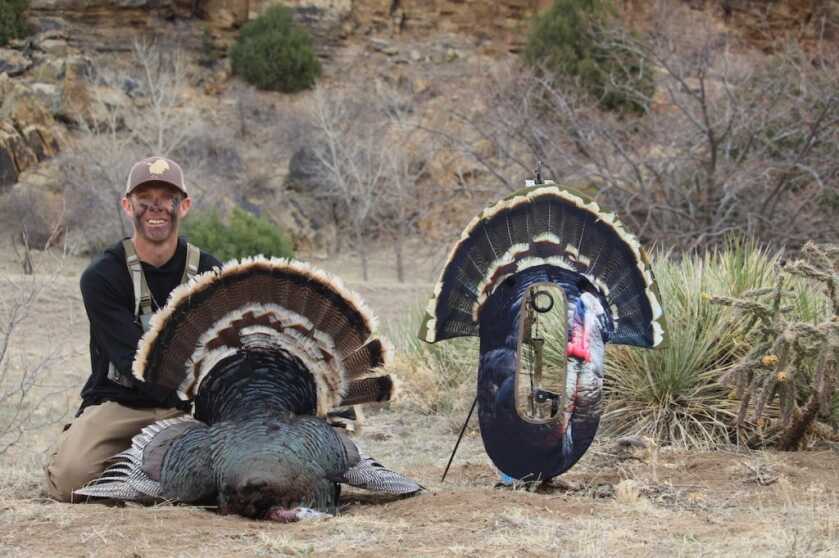
I love a good ground blind set for springtime toms. A semi-brushed-in hub-style blind paired with some realistic turkey fakes will create some solid in-your-face action. However, being cloaked in ninja gear huddled in a blind’s back corner while you work a bird with seductive hen talk isn’t the only way to skewer a spring longbeard.
Let me paint you a picture.
Three springs back, I got a tad carried away with my turkey schedule, and I’d lined up numerous public-land ventures in neighboring states, leaving myself very little time to chase close-to-home Merriam birds. I was down to my last day in my home state, and my morning off-the-roost hunt was a bust. A trio of toms tailed a group of squawking hens up a canyon. I thought about strapping my Double Bull blind to my back and trying to get in front of the mob, but the cover was sparse. It was then that I had a lightbulb moment.

My buddy and fellow turkey nut, Danny Farris, had been preaching to me about the fun and effectiveness of a bow-mounted decoy for a grip of time. His decoy of choice was the Stalker Turkey from Ultimate Predator Gear, and he loved it so much that he ended up purchasing the company. He’d sent me one to try, and I had the fold-up decoy stuffed in my pack. The turkey imposter sprung to life after unwrapping the Velcro band, and the durable cloth showed a full-strut tom. I liked the design. The decoy’s mid-section had been cut out, making room for my bow’s sight, arrow, and stabilizer to fit through. It seemed durable, and attachment via Velcro straps took only seconds. The fan and body provided a good cover, and my black top, which is a must, helped me blend into the decoy.
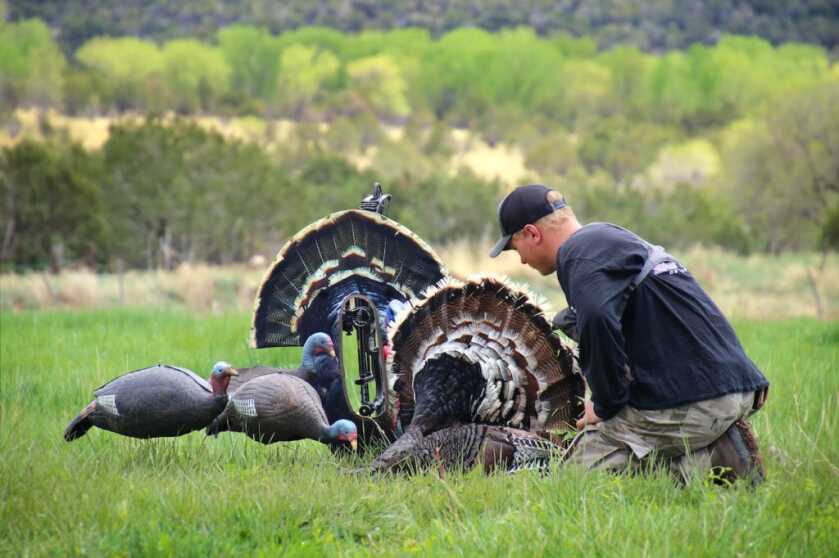
Once out of the blind, I made my way up the canyon. The attached-to-the-bow decoy traveled well and, weighing under 11 ounces, added very little weight. Using my optics and a dry creek for some cover, I closed the distance to 120 yards. All three toms were in full strut and were parading around a couple of ready-to-breed hens. Before showing the boys the decoy, I remembered that Danny had told me that the fake is most effective when you can show birds bits and pieces of it. He told me, “When possible, use a creek bank, sage bush, tree trunk, or whatever to disguise the decoy. Show the tom or toms a bit of the fan and body and then move it in behind some cover.”
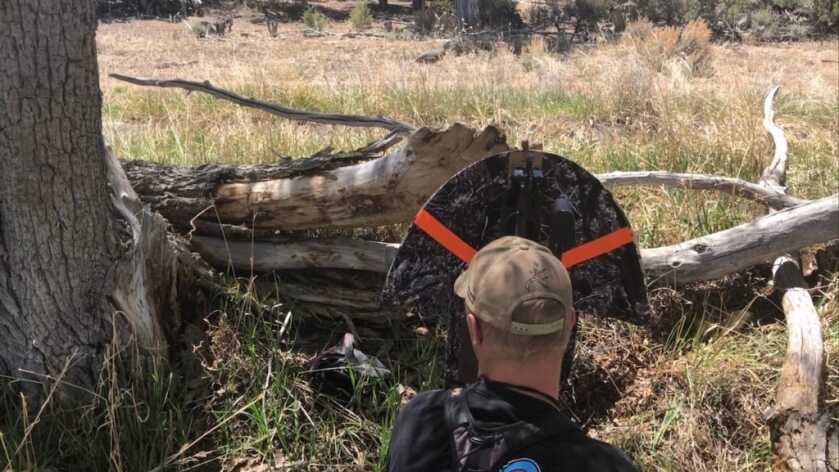
A giant yucca just over the creek bank was the perfect disguise, and after moving the decoy left and right with my riser, I peered through the cut out hole, and one of the birds was coming at full tilt. I barely had time to clip onto my release and draw my bow back, and when my release broke, and the arrow splashed through the bird, he kicked up dirt on my knees when he took off on his death sprint. I was trembling. At that moment, the 20-plus-pound Merriam may as well have been a 360-inch bull elk. Being on the ground and being the decoy proved to be a super-exciting stick-and-string method.
Now for some tips before visiting Ultimate Predator Gear and punching in your credit card number. First, and most importantly, don’t make the mistake of slapping this decoy on your bow in a hunting situation before you spend time practicing with it. Yes, this hunt was my first time using it in the field, but I’d slung a few arrows with it attached to my vertical rig beforehand. Though the decoy doesn’t add weight, you need to get familiar with how it feels in the wind. A little breeze isn’t bad, but wind speed over 10 miles per hour will make your bow feel like a sail. You also need to get familiar with attaching your decoy to the bow and how to fold it up and store it. When folded, the decoy measures 11-inches across and will fit in your pack. Another tip is to check your bow-poundage ego before trying this hunting style. If you can’t hold your bow straight out in front of you and bring the string straight back without pointing your riser up or down at the ground, you’ll spook birds when you draw.
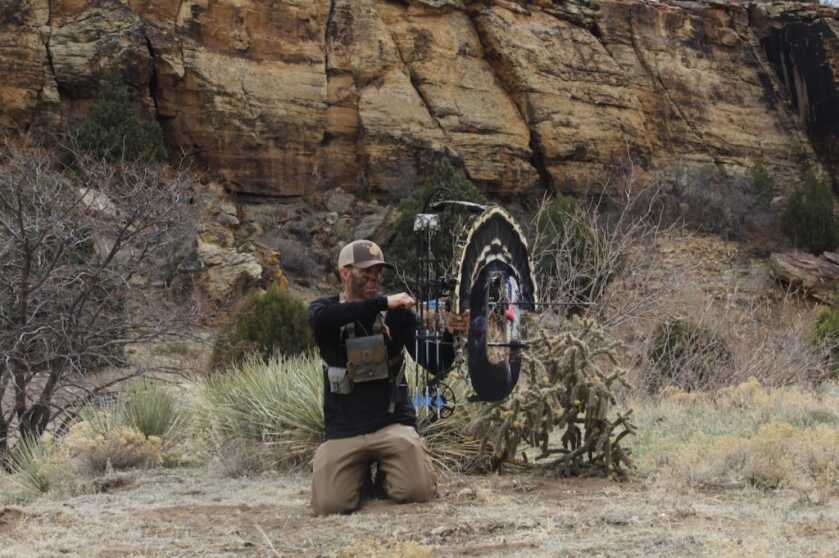
Something else to keep in mind when using the Stalker Turkey is that you are trying to pick a fight with another boy bird. This is not a passive approach, and it takes the right bird in the right mood to respond to the decoy. I have my best success with the decoy when multiple toms are trying to wrangle a group of hens, and when two or more two-year-old birds are running in a small boy band. Get within 200 yards, and use any available cover to help disguise the decoy and make it appear that a tom has wandered in and is strutting to show off for the ladies.
Another great tactic I regularly use is standard hen decoys from Dave Smith or Avian-X in conjunction with the Stalker Turkey. Set your hens between 12 and 15 yards from your position with the Stalker. Get a turkey chair, sit back in the brush, and you’re good to go. To an approaching bird, you look like a full-strut tom guarding his harem of ladies, and most of the time, it’s game on. Be sure to purchase a stabilizer or bow stand that lets you set your bow on the ground, so you don’t have to hold it the entire time.
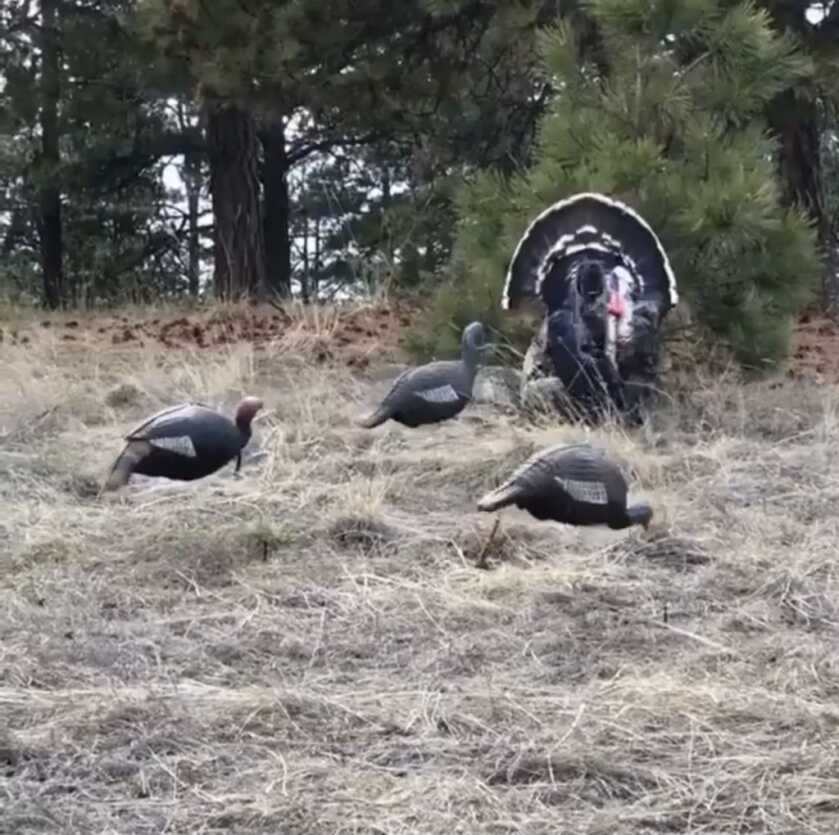
When used in combination with calling, a bow-mounted decoy can be very effective, and I can testify there is no method of turkey hunting with archery tackle more exciting. All it takes is the willingness to get out of your comfort zone and try something new. You’ll be glad you did when 25 pounds of pissed-off longbeard is running right at you.


